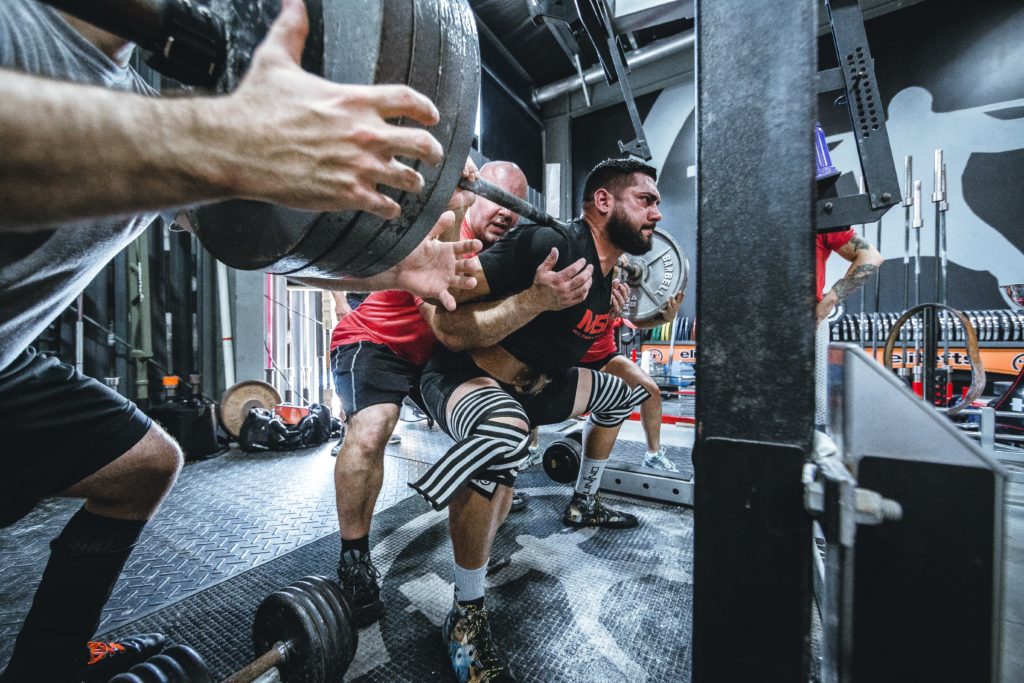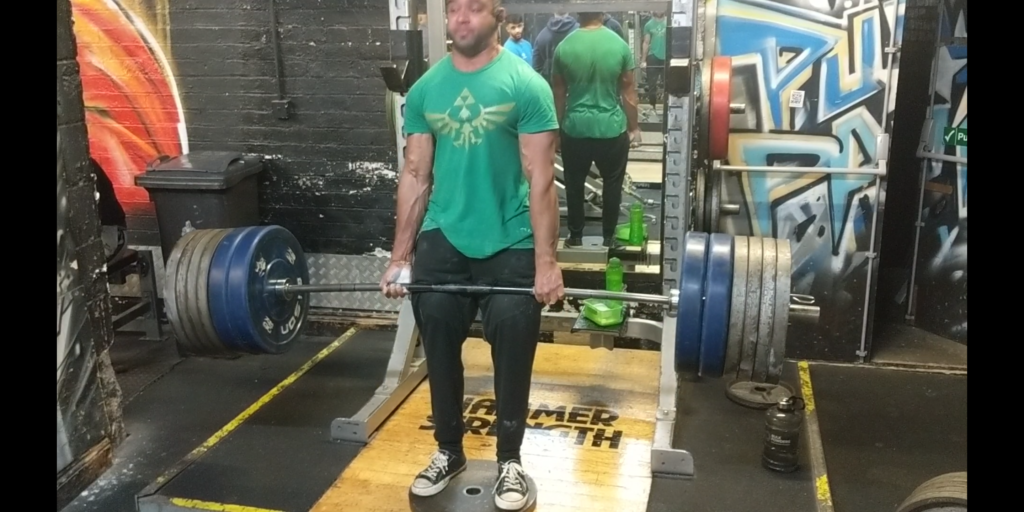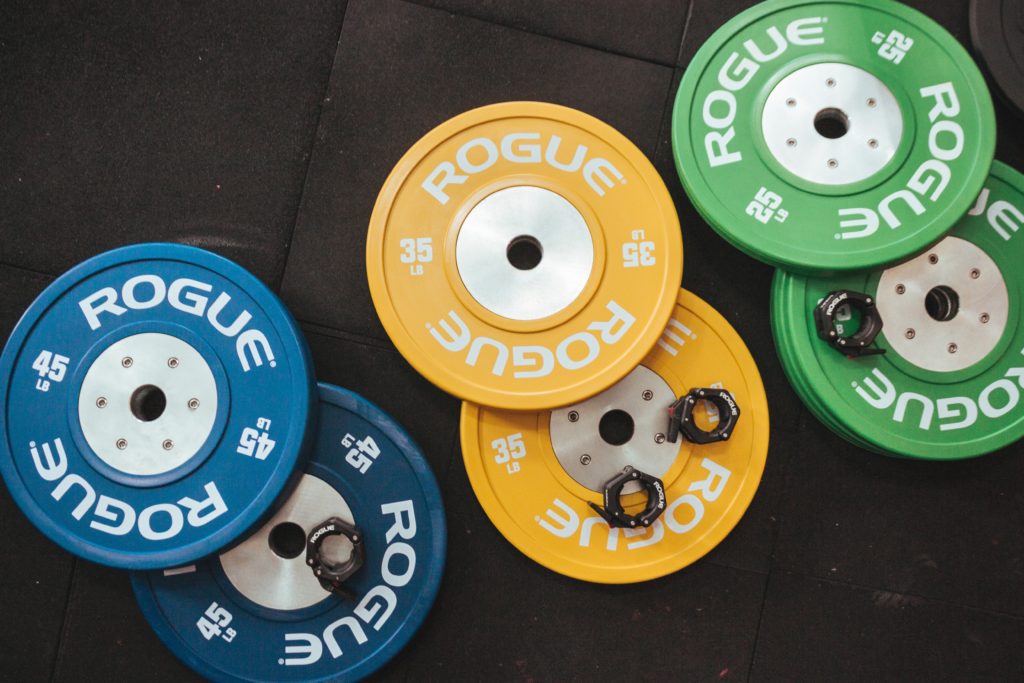What are Myo Reps?
Myo reps are a type of rest pause technique similar to DoggCrapp training.
They are a very time efficient method to get a lot of effective reps in. Effective reps are key for hypertrophy (muscle growth). Borge Fagerli was the first to coin the term for this specific rest pause technique.
How I Perform Myo Reps
1 – Pick a load where if you did one all out set to failure you’d achieve between 10-20 reps. I usually split this into two ranges, (9-13) reps on heavier days and (14-19) on lighter days.
2 – After a quick warmup set take this set (activation set) to an RPE 8.5-9 (around 1 rep from absolute failure).
3 – Rest 15s (around 5-6 deep breaths). This rest period is from the moment you’ve put the load down to starting the first rep of the next cluster.
4 – Do another “cluster” set to RPE 8.5-9.
5 – Repeat step 3 and 4 until you reach the final cluster and take this final one to absolute failure or very close (RPE 9.5/10)
Myo Rep Justification
You can go even lighter than 20 reps if you want to. Studies have shown that loads at 35-40% 1RM (around a 30RM) and lighter are as effective as heavier loads (or very close to) for hypertrophy if taken similarly close to failure.
For reasons I’ll go into further down myo reps are probably better utilised in the higher (lighter) of the 2 ranges but not by much. The reason the reps are lower on the heavier days are because this is heavy enough to also get a small strength stimulus in addition to the hypertrophy stimulus.
With heavier loads, somewhere around 80- 85%+ 1RM there is full muscle fibre recruitment from the first rep ( research has demonstrated even lighter for advanced lifters doing compound lifts). With lighter weights the first few reps aren’t doing much and there isn’t full muscle fibre recruitment until you reach the later reps in the set.
I mainly use myo reps for smaller isolation type movements that make up a small part of someones overall programming.
Even if your primary goal is strength there’s no downside to use using this high of a rep range for a small part of your programming, you still need muscle growth. You can even just stick at the lower end of the range and aim for (9-12) reps on the activation cluster which is heavy enough to give a strength stimulus.
All “sets” (activation and clusters) aren’t taken to failure because this will reduce the total reps, effective reps and therefore hypertrophy that you are stimulating.

I find RPE 8.5-9 is close enough to failure to ensure you are actually pushing yourself and getting some effective reps in. It’s also far enough from failure to allow you to get more reps in subsequent clusters before fatigue limits your performance too much.
Why Absolute Failure
I use them on exercises that are easy to recover from, so the fatigue from doing so many reps pretty close to failure is rarely something to worry about. It would definitely be an issue on bigger compound lifts and you’d have to think in more depth about how to implement them. Though it wouldn’t suit many of them as discussed further below.
If the RPE was lower I suspect many people would undershoot the RPE significantly. Myo reps are something I usually place at the end of the workout. Motivation to train hard is usually lower and people tend to put less effort in.
At the end of a workout it’s easier to undershoot the RPE. It’s harder to lie to yourself about a set that’s supposed to be to absolute failure in comparison to RPE 8/2 RIR.
Giving a slightly higher RPE can also “shift the curve” a bit and help ensure that they’re actually training as hard as you want them to. It’s also easier to judge RPE the closer you get to 10.
I like people to take the final cluster to absolute failure or very close to it (RPE 9.5-10) because it ensures actual effort is being put into these exercises. If they get far more reps on the final cluster this shows them they weren’t pushing the previous clusters as hard as they could have been. I usually use myo reps as the final exercise in a workout for a muscle group.
I find that for most people if they actiually take all “clusters” but the final one to RPE 8.5-9 all subsequent clusters will have around a quarter of the reps of the activation cluster. With the final cluster having one more rep (because it’s all the way to failure instead of RPE 9).
This will vary on an individual and muscle group specific basis since people vary in their muscle fibre makeup. Different muscle groups within an individual will vary as well. A quarter seems to be about average for males.
Slightly lower RPEs may possibly be slightly better in terms of fatigue to stimulus ratio. However there are different types of fatigue. We’re mainly worried about systemic fatigue from taking sets too close to failure which isn’t really an issue on smaller isolations. I prefer to alter the frequency and number of clusters (volume in this case) in a given training week instead of lowering the RPE any further.
How The Rep Numbers Will Normally Look
Something like 18-4-5-4-6 is a rep performance that looks pretty normal. If I see something like 18-9-7-5-6 it indicates that the person probably didn’t take the activation set close enough to failure.
This isn’t always the case people with slower twitch muscles and better work capacity will tend to achieve more than a quarter reps per cluster and the opposite will occur with people who have faster twitch muscles and worse work capacity.
If they reach the upper end of the rep range on the activation set while being below RPE 8 they should have used a heavier weight.
If they get 20+ reps on the activation set when using myo reps in the (14-19) range they shoud’ve used a heavier weight
What Exercises Should Myo Reps NOT be Used For?
The bulk of your training should probably be made up of straight sets unless you’re very time restricted. Straight sets grow the fastest twitch fibres better which get simulated the least by day to day activities and have the most potential for growth.
There are several conditions that determine whether specific exercises are suitable for myo reps.
Make sure the target muscle is the limiting factor
Myo reps are a tool used for hypertrophy more than strength. If you’re using them on a compound lift the target muscle should be the one that fails first and performance shouldn’t be limited by other muscles.
If you’re doing myo reps on a machine chest press and are trying to target your chest make sure your delts or triceps don’t give out far before failure. In this situation your chest may barely be getting stimulated as it’s not close enough to failure. However for more advanced lifters it’s been shown that on multi joint compound exercises full motor recruitment can occur further from failure than on isolation exercises. I’d argue to still make the target muscle the limiter even considering this fact.
Make sure cardio Isn’t the limiting factor
If you can’t get sufficiently close to failure to stimulate the target muscle because of poor cardio you’re not gonna get much use out of myo reps either. This is one reason why big compound movements like barbell squats aren’t suitable for myo reps.
This shouldn’t be much of an issue if you stick to easier movements and rest 15s between clusters. The level of cardio required for most movements that myo reps are suitable for isn’t very high.

Bad Idea to use Myo Reps with Low bar Squats
Don’t use myo reps for very technical exercises
When using myo reps you do a lot of reps close to failure with little time to catch your breath. This makes it much harder to focus on your technique.
Sloppy technique will at best make the exercise less effective than desired for the target muscle. A bigger concern here is risk of injury due to being so close to failure for so long with sub par technique.
Don’t use myo reps when an exercise takes a long time to set up
This is another reason why barbell squats aren’t a good fit for myo reps. Resting 15s between racking the weight in one cluster and starting the first rep of the next cluster just isn’t practical.
It’s not uncommon for lifters to have setups on squats that take 15s. Even if the setup only takes 10s this gives you virtually no time to rest and will have you constantly moving for the duration of the entire set.
This comes back the point about cardio. Many people struggle to catch their breath on a regular set of 10 on squats due to the size of the muscles involved and the nature of the lift.
Now imagine trying to do a full set and 4 more clusters with virtually no rest because you’re either squatting the weight or trying to set up for the next one.
Don’t use myo reps when the lower back is involved significantly
Myo reps accumulate a lot of fatigue compared to straight sets for the same exercise. The lower back tends to get easily fatigued, I don’t utilise myo reps with any exercises significantly involving the lower back. I’m sure you could probably make it work with exercises like back extensions but I’ve never tried it.
Don’t Use myo reps with exercises that are very centrally fatiguing
These tend to be bigger compounds. The short rest periods don’t give your nervous system enough time to recover to allow you to train as hard as you need to to overload well.
This is why exercises like squats and deadlifts aren’t a good fit for myo reps, they fit all of these categories.

Wouldn’t recommend myo reps on deficit deadlifts either
Don’t use myo reps If you have unlimited time to train
This is pretty much nobody but I wanted to mention this. Myo reps are primarily useful as a way to get a lot of quality work in with limited time. There are benefits to straight sets (growing faster twitch fibres better). However if you’re using a combination of straight set compounds and myo rep isolations I don’t think this matters much.
Exercises and Muscles I Use Myo Reps for
I tend to use Myo reps mainly with isolation movements and some compound machine lifts towards the end of a session.
They can be used for pretty much all body parts but I find the delts respond particularly well. Since I’ve been incorporating them both my clients and myself have seen very good delt growth. Its not uncommon for drug free lifters to have disproportionately small side and rear delts but this isn’t the case for any of my clients or myself.
Biceps – Bicep curl variations
Triceps – Tricep extension variations
Chest – Cable and Machine fly variations
Rear delts – Face pull and Rear delt fly variations
Side delts – Lateral raise and Upright row variations
Hamstrings and quads – Leg curl and Leg extension variations respectively
Back – Chest Supported Row Variations. I rarely try to isolate parts of the back. I mainlyuse myo reps with these just to save time.
How frequently I program them will depend on the volume, intensity and frequency of the rest of the program. These are general guidelines that I find to work pretty well on average. I usually just use one myo rep exercise per body part at the end of a workout.
At the end of an upper body workout instead of doing 3*10-12 bicep curls, I’ll do something like (9-12) + 3/4 CLUSTERS. In addition to the above factors the frequency will depend on how advanced you are as a lifter.
I’d recommend using somewhere between 2-5 clusters depending on what point in your current training block you’re in. If this is your first time using a rest pause technique start on the low end and work your way up.
Myo Rep Training Frequency
Biceps and triceps 2-3x a week
Chest 1-2x a week
Hamstrings 1-2x a week
Quads 1-2x a week
Side and rear delts – 3-5x a week. Because they are such small muscles and can handle such high volumes I find high frequency to work very well with these muscles. They recover fast, hiting these 1-2x a week is a waste if you’re trying to prioritise them. This may not be the case if they’re already massive but then you wouldn’t be trying to prioritise them.
These muscles don’t need more than 2 days rest (at most) apart from extreme cases. I almost always have people train them between 3-5x a week (every workout). I’ve seen great gains and no recovery issues from such a high frequency.
I’ve had one person do these 6x a week (every workout) and make great gains. Because the sample size is so small I won’t recommend it to everyone but 5x a week has a big enough sample size to where I think it’s a reasonable recommendation. If you’ve not done much of these before I’d recommend starting at 3x a week and working up to 5x over several training mesocycles.
If you’re going to use a frequency of 3 or more times a week I’d highly recommend at least 2 variations for the main purpose of avoiding overuse injuries.
How To Include Myo Reps When Training For Strength
Myo reps are a hypertrophy tool. Most people training primarily for strength also want to build muscle (even if some won’t admit it). Even those who only care about strength will need to build muscle. Muscle is the raw material required to produce the force to lift the weights they want to lift.
I’d recommend just sticking to the lower end of the rep range in more strength focused blocks, (9-12) reps on the activation set. This is light enough to ensure you are actually moving the weight with the target muscle instead of just trying to get the weight up. It’s also heavy enough to get a strength stimulus and enough effective reps to build muscle.
When strength is the primary goal it may be wise to be slightly further from failure on the earlier clusters (RPE 8-8.5 instead of 8.5-9). This will ensure that you’re less fatigued in subsequent clusters and can output slightly more force. If it’s important to keep fatigue very low to hit a big lift you could even stay further away from failure on the final cluster. This is rarely necessary and can just be accomplished by adjusting the number of clusters instead, especially since we’re emphasising the slower quicker to recover fibres with myo reps.
When training for strength myo reps shouldn’t make up the bulk of your training, the loads aren’t heavy enough to justify that. However for max strength it isn’t necessary to do ALL of your work in the 80-85%+ 1RM range.
When using this lower rep range even the lightest set you’ll touch will be at least 70% 1RM. This will only be on movements like tricep extensions which you probably weren’t going to go heavy on anyways. Including myo reps can help you save time and get volume in that you otherwise might not have done to speed up your progress.
Explanation of Effective Reps
To try to compare myo rep sets to straight sets it’s useful to have a basic understanding of Effective reps.
Effective reps are a way to quantify and explain how, as a set goes on and the reps get closer to failure, the reps also become more effective for hypertrophy on a per rep basis.
So for example the rep that is 2 reps before failure is more effective for muscle growth than the rep 8 reps from failure, I don’t think anyone will disagree with the general concept here.
The main issue is that we don’t have strong enough data to justify being too specific with EXACTLY how this works and EXACTLY how many reps from failure we’re talking about. Read Greg Nuckols’ article (which was conveniently posted as I was writing this) to get a better understanding.

Even though the data isn’t conclusive, having a cutoff point somewhere makes discussing this concept much more practical.
The cut off point between reps being effective is thought to be 5 reps from failure, or RIR/RPE5. This is around the point in a set where full motor recruitment occurs and shortening velocities are low enough so that each muscle fibre experiences more mechanical tension.
This ISN’T to say the 6th rep from failure stimulates hypertrophy 0% and the 5th stimulates it 100%.
It’s a spectrum, even within the effective rep range the final rep before failure is more stimulative than the one 5 reps before failure. Reps within 5 reps from failure should actually be called “more effective reps” but that doesn’t roll off the tongue as well.
5 isn’t a hard number, it just seems to be the most common estimate by many of the top experts in the field.
If we compare both a 5RM set and a 15RM set taken to failure we can see that they both have 5 effective reps. The 15RM set is probably still more effective for hypertrophy than the 5RM set because it has all these extra “less effective” reps, but not by a lot.
If we compare an 8RM to a 15RM I would guess that this small difference would largely disappear. This matches pretty well with the concept of tracking hard sets in the 6-30 rep range which many experts recommend for tracking training volume for hypertrophy.
RPE/RIR also effects this, with each rep left in the tank you lose 1 effective rep. A set at RPE 8 (2 reps in reserve) can have 3 effective reps at most.
Whether you do a set of 3 with what you could have done 5 with, or a set of 13 with what you could have done 15 with you get 3 effective reps in both cases.
In addition to Greg’s article, have a look through Chris Beardsley’s Medium page which has several great articles concerning effective reps.
Myo Reps VS Straight Sets
The main benefit of myo reps is to save time. I’ll compare the time taken for a myo rep set and a similarly effective number of straight sets.
I’ll count a set of 12 as taking about 45 seconds, we’ll use a 120 second rest period for the straight sets.
The straight sets will be taken to RPE 9,9 and 10.
The myo rep clusters will all be taken to RPE 9 apart from the last cluster which will be RPE 10. There will be a 15s rest between each cluster
3 sets of 12 :
Time taken : 375 seconds (120s*2 +45s*3). Effective Reps : 13 = 4+4+5
Activation set and 4 clusters 12-3-3-3-4 :
Time taken : 157 seconds (15s*4+ 45s + 12s + 12s +12s + 16s) Effective Reps : 17 = 4+3+3+3+4
So the myo reps take less than half the time and have more effective reps, they’re almost 3x as efficient in this example.
The straight sets have slightly more total reps, as mentioned above reps further than failure than 5 or RPE/RIR5 aren’t completely ineffective for hypertrophy. The reps within 5 reps from failure are also not equally effective for hypertrophy.
The straight sets would have more total reps (36 vs 25) but the myo reps have more effective reps in both magnitude and number. I doubt this would tip the scale in favour of the straight sets, at best I’d estimate they’re equally effective for hypertrophy.

Even if this specific model of effective reps isn’t 100% correct, it’s pretty clear that myo rep sets are way more time efficient than traditional straight sets.
Counting Set Volume with Myo Reps
When RPE is roughly equated, hard sets are probably the most practical tool we have at the moment when counting training volume for hypertrophy. So how do we count myo rep “sets” in comparison to straight sets?
Because of the various factors mentioned in the effective rep section there isn’t a simple definitive answer.
Assuming you average at least 2 reps per cluster (which you should unless the activation set was too heavy) you’re getting half of the possible effective reps that you can get when the clusters are taken to RPE 9.
2 reps per cluster will be the absolute lowest you’ll go and most clusters will actually have 3-5 reps. At RPE 9, 4 effective reps is the most you can get.
However you don’t get the small (yet worth considering) stimulus of the reps before that point. Using this logic I would consider each cluster to be somewhere between a full set and half a set. I don’t think we have data strong enough to try to be more precise than this.
I count each cluster as HALF a normal straight set. I would count an activation set and 4 clusters as 1+0.5+0.5+0.5++0.5 = 3 sets.
Why choose 1/2 over a full set?
I think that in reality 1/2 a set is the minimum stimulus that they are, counting them as a slightly smaller stimulus than they are isn’t a concern as long as you aren’t overshooting your recovery capabilities. As we’re only doing the later reps in a set and therefore we’re targeting mainly the slower twitch muscle fibres (which recover quicker) with the clusters I think the fatigue from each cluster is at most equal to half an additional straight set, it may even be less.
I usually only use high frequency myo reps with the delts and (sometimes) arms which are difficult to overreach due to being smaller muscles. If there are recovery issues with bigger muscles (such as legs) I would look at the rest of the program first, I don’t include much myo rep work with them anyway.
I’d look the volume, intensity and frequency of straight sets before trying to consider how to quantify myo rep sets any more precisely.
As long as we stick to RPE 9 on all clusters but the final one, for hypertrophy it may be better to stick to the higher end of 2 ranges given above (14-19) on the first set.
This should ensure you are getting all 4 effective reps (at RPE 9) and all 5 on the final cluster (RPE 10).
Going a bit heavier isn’t a large concern as you can just do more clusters. This will take slightly longer but not that much longer. Again I’ll reiterate that the effective rep concept in this specific form isn’t set in stone, getting TOO caught up in the specific details is probably unproductive. I kind of had to to write this article but you could go even more in depth if you really wanted to nerd out.
The main goal here is to illustrate that myo reps are significantly more time efficient than traditional straight sets.
Read Greg Nuckols article linked above if you want to learn more. Even if this specific form of conceptualising effective reps isn’t 100% true there is definitely a rationale to focusing on the reps closer to failure.
This is why myo reps are such a time efficient method for hypertrophy. Whether you get 3 or 4 reps per cluster won’t matter much.
How I Program Myo Reps
Over the course of the training mesocycle I like to increase the number of clusters. In the final week I reach a peak of 4-6 clusters starting from 1-3 in the first week.
In the deload I move back down to 0-1 clusters with a different exercise variation if necessary. I may also lower the RPE slightly.
If there is no weight increase from meso to meso there should at least be a greater number of reps in final week of the second meso in comparison to the first meso when trying to progress.
Unless the activation cluster become too easy (ie you hit RPE 7.5 or lower at the higher end of the rep range) I like to save weight increases for a new block.
If you increase weight halfway through a meso, even with an extra cluster you may not be getting as many effective reps.
For example if you were doing straight bar curls with 50kg/110lb in the first week and you got 12-3-3-3-4
With a weight increase in the next week to 52.5kg/116lb you may only get 9-2-3-2-2-3.
The second week would have 1 LESS effective rep despite being heavier and having 1 more cluster.
However if the weight increase was saved until AFTER the deload the second week may have looked like 12-3-3-3-3-4 with 50kg which is 3 MORE effective reps instead of 1 LESS.
In most cases I don’t think the increased weight will trump the extra effective reps for hypertophy.
A deload is effectively a short resensitization period. A temporary drop isn’t much of an issue when starting a new meso.
It’s not absolutely necessary to see an overload every microcycle (training week) however if you program in a way to where this occurs as often as possible I believe the results would be better.
Effective reps probably follow some sort of U shaped curve with respect to hypertrophy. More is better up until a certain point.
After this point more isn’t worse but also not better, at a further point more is actively worse.
Since it’s difficult to figure out where this point lies exactly if you’re pretty sure you’re not overshooting your recovery capabilities the goal should be to get MORE effective reps to maximise hypertrophy. IF performance isn’t decreasing you’re probably not overshooting your recovery capabilities.
Usually I program in 4/5 week blocks with the first week being a deload.
4 Week block : (0/1),(2/3),(3/4),(4/5) Clusters in week 1-4 respectively.
5 Week block : (0/1),2,3,4,(5/6) Clusters in week 1-5 respectively.
I usually manipulate volume of compound straight sets and frequency of myo reps rather than stray too far from this method.
I wouldn’t recommend doing too many clusters per exercise. It won’t take much time but past a certain point the fatigue isn’t worth the stimulus it provides (apart from maybe right before a deload) even for smaller isolations. You’d be better off training with higher frequency instead of trying to cram it all into one session.
I also don’t think it’s the best idea to pause mid cluster, all reps should be done continuously within each cluster. This is already a rest pause technique, splitting it up even further makes it difficult to track and will generate even more fatigue.
Myo reps (or another rest pause technique) are a great tool that almost everyone should be using to make their workouts more efficient.
Interested in coaching to take your progress to the next level?
